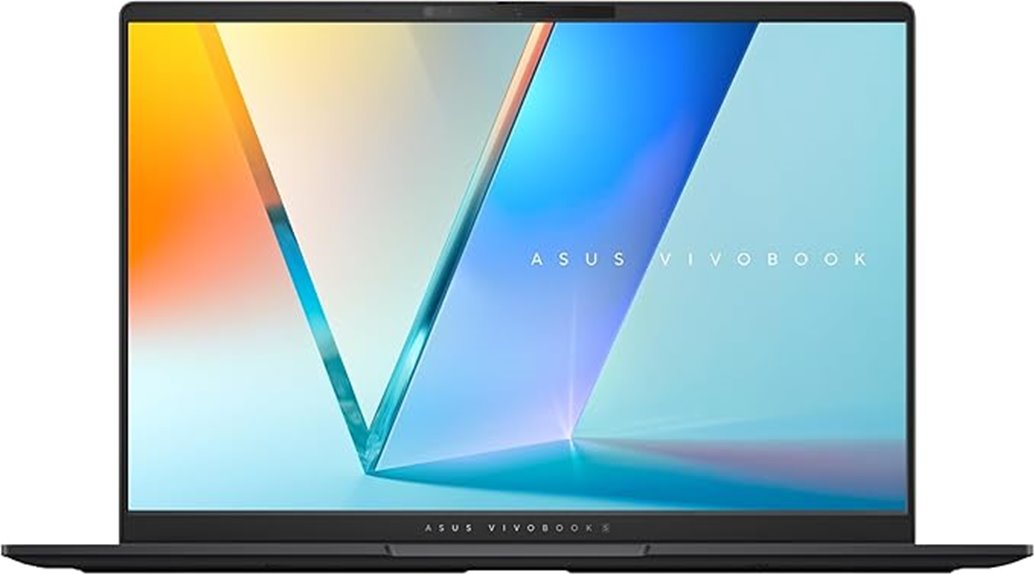Best Laptop for Data Analytics (Top 5 Picks for 2025)
If you’re tackling data analytics in 2025, you’ll want performance and power in your laptop. Consider the Apple 2024 MacBook Pro with its M4 chip for speed and multitasking. The Acer Swift X 14 offers stunning visuals with its OLED display. Apple’s 2025 MacBook Air and ASUS Vivobook S 14 deliver efficient processing, while the Samsung Galaxy Book4 Pro ensures robust performance. Keep exploring to find out more about each option and what they can offer!
In the interest of full disclosure, we would like to inform you that some links on our website are affiliate links. By clicking on these links and completing a purchase from our partners, we may receive a nominal commission at no extra cost to you. Rest assured, our affiliate partnerships do not compromise the integrity of our editorial content or product evaluations. For further clarification, kindly refer to our comprehensive affiliate disclosure.
Table of Contents
What Are the Best Laptop for Data Analytics to Buy This Year?
Here are my top picks for the best laptop for data analytics, you can consider this year.
Apple MacBook Pro Laptop with M4 Chip
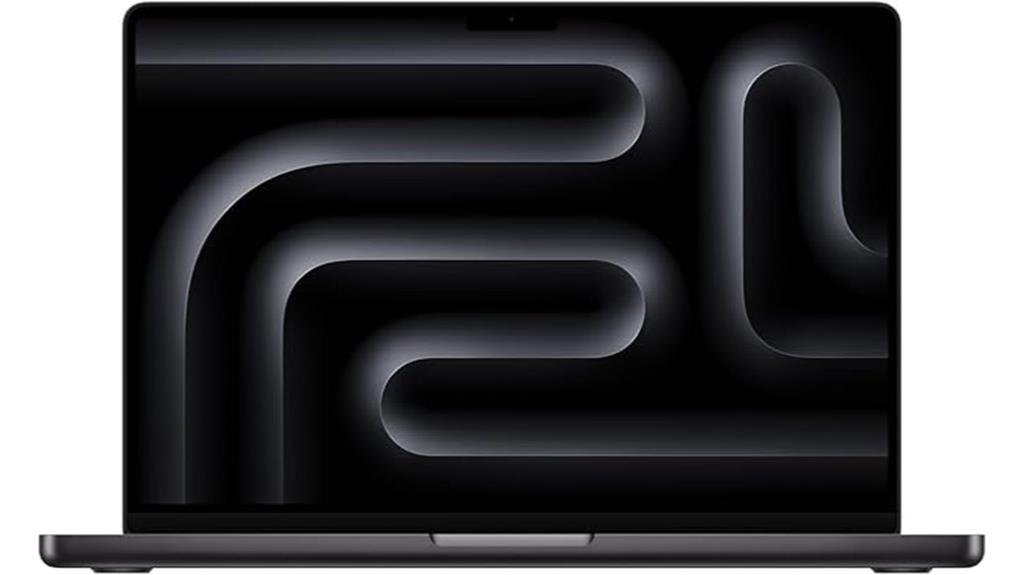
If you’re a data analyst seeking powerful performance and seamless multitasking, the Apple 2024 MacBook Pro with the M4 chip is an ideal choice. Its 10-core CPU and GPU give you exceptional speed, allowing you to run productivity and pro apps without a hitch. With a stunning 14.2-inch Liquid Retina XDR display, you’ll enjoy visuals that pop, thanks to 1600 nits peak brightness and an incredible contrast ratio. Plus, the all-day battery life means you’re covered whether you’re plugged in or on the go. Integrated with Apple Intelligence, it enhances your experience while keeping your data secure.
Best For: Data analysts and professionals seeking powerful performance and high-quality visuals in a portable laptop.
Pros:
- Exceptional performance with a 10-core CPU and GPU for seamless multitasking and running demanding applications.
- Stunning visuals on a 14.2-inch Liquid Retina XDR display with up to 1600 nits peak brightness and a 1,000,000:1 contrast ratio.
- All-day battery life allowing for consistent performance whether at a desk or on the go.
Cons:
- Higher price point compared to other laptops in the market, which may be a barrier for budget-conscious buyers.
- Limited upgrade options after purchase, as RAM and storage are integrated and not user-serviceable.
- Weight and size may be less portable compared to ultrabooks, making it less ideal for users prioritizing extreme portability.
Acer Swift X 14 Laptop (SFX14-72G-77NJ)
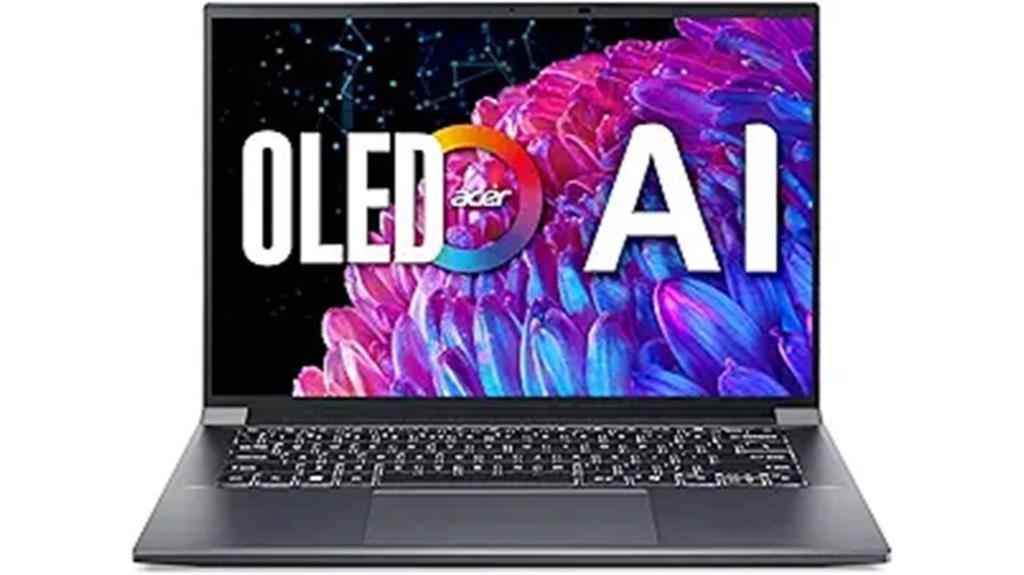
The Acer Swift X 14 Laptop (SFX14-72G-77NJ) stands out as an exceptional choice for data analysts and creators alike, thanks to its Intel Core Ultra 7 processor and NVIDIA GeForce RTX 4060 GPU. You’ll appreciate the vibrant 14.5-inch OLED display with a 2880 x 1800 resolution and 120Hz refresh rate, offering stunning visuals and TÜV Rheinland certification for eye safety. With 16GB memory and a 1TB SSD, multitasking becomes seamless. Plus, the AI features and enhanced webcam ensure smooth collaboration. Connectivity options, including Wi-Fi 6E and Bluetooth 5.3, keep you linked to all your essential tools effortlessly.
Best For: The Acer Swift X 14 Laptop (SFX14-72G-77NJ) is best for data analysts and creators who require high performance and stunning visuals for their work.
Pros:
- Exceptional processing power with Intel Core Ultra 7 and NVIDIA GeForce RTX 4060 for demanding tasks.
- Vibrant 14.5-inch OLED display with high resolution and fast refresh rate, enhancing visual experience.
- Comprehensive connectivity options including Wi-Fi 6E and Bluetooth 5.3 for seamless integration with devices.
Cons:
- The compact size may limit upgradeability for some components in the future.
- Price point may be higher compared to other laptops with similar specifications.
- Battery life may be affected under heavy graphical loads due to high-performance components.
Apple 2025 MacBook Air 15-inch Laptop with M4 Chip
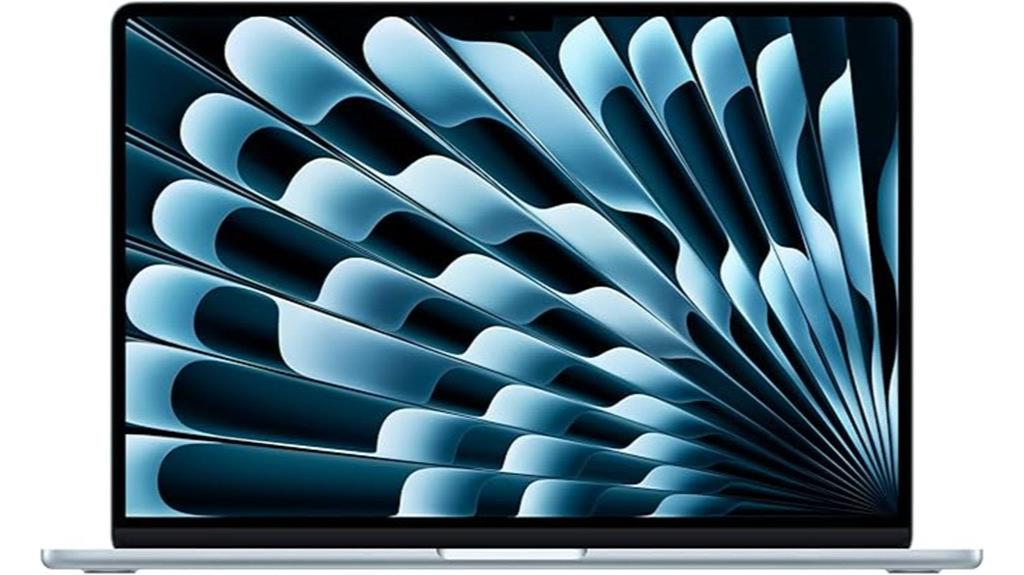
For data analysts seeking a powerful yet portable solution, the Apple 2025 MacBook Air 15-inch with the M4 chip stands out as an ideal choice. With its impressive performance, multitasking is a breeze, whether you’re analyzing data or editing videos. The stunning 15.3-inch Liquid Retina display enhances your visuals, showcasing vibrant colors and sharp details. You’ll appreciate the high-quality 12MP Center Stage camera and immersive audio from six speakers during virtual meetings. Plus, connectivity options like Thunderbolt 4 ports and Wi-Fi 6E ensure seamless integration with your workflow. Enjoy long-lasting battery life, keeping you productive wherever you go.
Best For: Data analysts and professionals seeking a powerful, portable laptop with exceptional performance and display quality.
Pros:
- Enhanced Performance: The M4 chip provides superior speed for multitasking and demanding applications.
- Stunning Display: The 15.3-inch Liquid Retina display offers vibrant colors and sharp detail, ideal for visual analysis.
- Long Battery Life: Up to 18 hours of battery life ensures productivity throughout the day without frequent charging.
Cons:
- Limited Ports: Only two Thunderbolt 4 ports may require additional adapters for certain peripherals.
- Price Point: Higher cost compared to other laptops in the market may be a barrier for budget-conscious buyers.
- Weight: While portable, the 15-inch size may be less convenient for those needing ultra-lightweight options.
ASUS Vivobook S 14 OLED Slim Laptop (M5406WA-DS76)
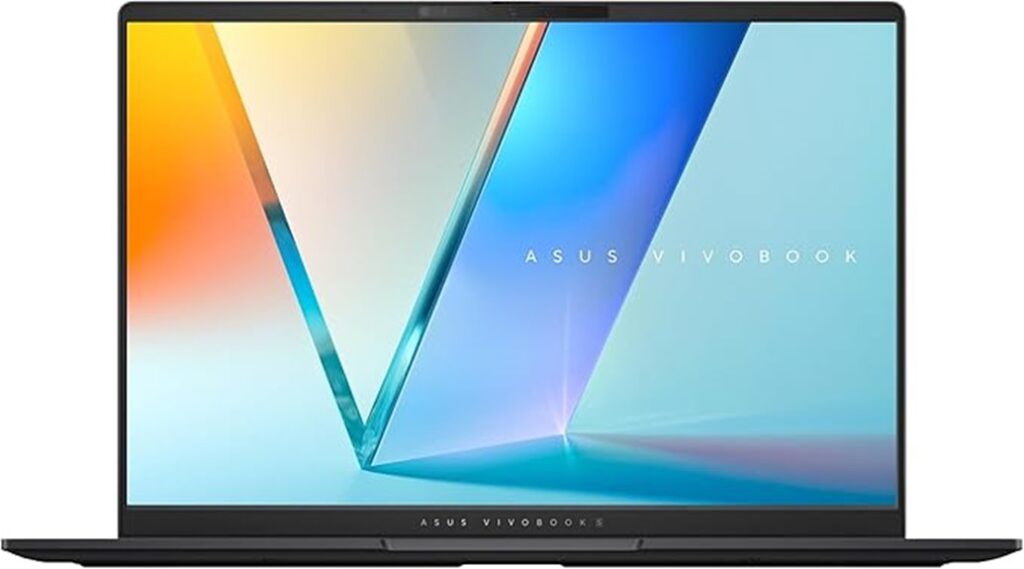
Engineered for data analysts seeking robust performance, the ASUS Vivobook S 14 OLED Slim Laptop (M5406WA-DS76) stands out with its AMD Ryzen 9 365 processor and 24GB of LPDDR5X RAM. You’ll appreciate the stunning 14” 3K OLED display, offering vibrant colors and crisp details, perfect for data visualization. Weighing just 2.87 lbs and only 0.63” thick, it’s highly portable, making it ideal for on-the-go analysis. With a customizable RGB backlit keyboard and multiple USB ports, you’ll enjoy an ergonomic and versatile experience. Plus, the speedy 512GB SSD ensures your files are always at your fingertips.
Best For: Data analysts and professionals who require high performance and portability for data visualization tasks.
Pros:
- Powerful AMD Ryzen 9 365 processor with 10 cores for efficient multitasking and data processing.
- Stunning 14” 3K OLED display delivers vibrant colors and sharp details, enhancing visual analysis.
- Lightweight and slim design at 2.87 lbs and 0.63” thick, making it easy to carry for on-the-go use.
Cons:
- Limited storage capacity of 512GB SSD may require external storage solutions for large datasets.
- Single-zone RGB backlighting on the keyboard may not appeal to users looking for more advanced customization.
- No dedicated graphics card, which may limit performance for graphics-intensive applications.
Samsung Galaxy Book4 Pro Business Laptop (NP944XGK-KG4US)
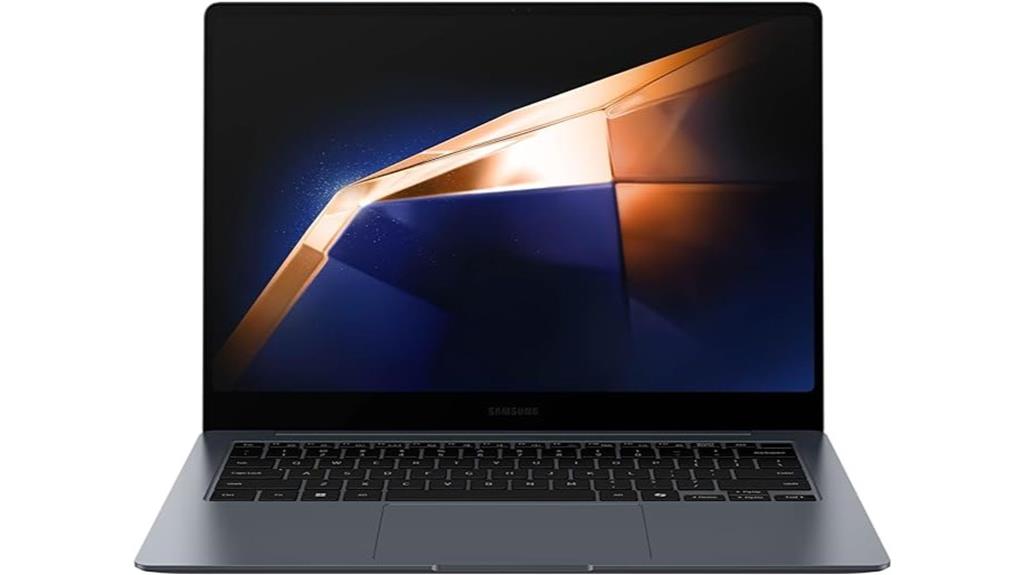
With its powerful Intel Core Ultra 7 processor and 32GB of RAM, the Samsung Galaxy Book4 Pro Business Laptop (NP944XGK-KG4US) is an exceptional choice for data analysts and professionals who require robust performance for multitasking and data-intensive tasks. Weighing just 2.71 lbs, this sleek 14-inch laptop features a stunning 3K AMOLED touchscreen that enhances your visual experience. With a 1TB SSD, you can store extensive datasets without worry. Connectivity options like Thunderbolt 4 and HDMI make it versatile. Plus, Samsung Knox ensures your data remains secure, making this laptop a reliable partner for your analytical endeavors.
Best For: Data analysts and professionals seeking a powerful, portable laptop for multitasking and data-intensive tasks.
Pros:
- Exceptional performance with Intel Core Ultra 7 processor and 32GB of RAM for seamless multitasking.
- Stunning 3K AMOLED touchscreen display enhances visual clarity and experience.
- Lightweight design and extensive connectivity options make it ideal for professionals on the go.
Cons:
- Higher retail price compared to competitors offering similar specs.
- Limited RAM upgrade options in certain regions (max 16GB).
- OEM SSD quality perceived as lower for the price point.
ALSO READ: Best Laptops for Trading Forex, Best Laptops for Bookkeeping, Best Laptop for Healthcare Professionals, Best Laptop for Transcription, Best Laptop for Instructional Design, Best Laptop for Physicians, Best Laptop for Sublimation Printing, Best Laptop for Notary Signing Agents, Best Laptop for Teletherapy, Best Laptops for Interior Design Students
Factors to Consider When Choosing the Best Laptop for Data Analytics
When choosing a laptop for data analytics, you need to consider several key factors. Performance and processing power are crucial for handling complex tasks, while display quality affects your ability to analyze data effectively. Don’t overlook memory, storage, battery life, and connectivity options, as they can significantly impact your workflow.
Performance and Processing Power
Choosing the right laptop for data analytics in 2025 hinges on several critical performance factors. First, a powerful processor, like an Intel Core Ultra or AMD Ryzen, is essential for efficiently tackling complex tasks and reducing processing time. Opt for multi-core CPUs to enhance performance through parallel processing, allowing you to execute multiple tasks simultaneously. A dedicated GPU, especially those optimized for AI and data processing, can significantly boost performance in graphically intensive projects. Ensure you have at least 16GB of RAM for smooth multitasking and effective handling of large datasets. Finally, fast storage solutions, such as SSDs, are crucial for quick data access and real-time responsiveness in your data-driven applications.
Display Quality and Resolution
Having strong performance and processing power sets the foundation for effective data analytics, but display quality and resolution play a vital role in how you interact with that data. A higher resolution, like 2880 x 1800 or 3840 x 2160 pixels, sharpens images and text, reducing eye strain during long analysis sessions. Look for features like a 120Hz refresh rate for smoother scrolling in complex visualizations. High brightness levels, around 600 nits, ensure you can see clearly in various lighting conditions, which is crucial for flexibility. Finally, color accuracy is key—aim for displays that support 100% DCI-P3 color gamut to ensure your graphs and charts are true to life. Choosing wisely can enhance your analytical experience significantly.
Memory and Storage Capacity
A minimum of 16GB of RAM is essential for effective data analytics, allowing you to multitask seamlessly and manage large datasets without lag. Higher RAM capacity enhances memory bandwidth, improving data processing speeds, especially when running complex algorithms or multiple applications simultaneously. For storage, opt for a Solid State Drive (SSD) with at least 512GB capacity. SSDs offer faster read and write speeds, significantly boosting data access times compared to traditional HDDs. This ensures you can accommodate datasets, software, and backups effectively. Additionally, consider utilizing cloud storage to supplement your local storage needs. Cloud options provide flexibility and scalability, making it easier to access large datasets from various devices while ensuring you’re always equipped for your analytical tasks.
Battery Life Considerations
Battery life is a vital consideration when selecting a laptop for data analytics. You’ll want at least 8 hours of battery life to ensure you can run complex analyses and process large datasets without interruptions. Laptops boasting all-day battery life—between 10 to 18 hours—are ideal for working on the go, especially when power sources are limited. Look for devices with efficient power management, as advanced processors can enhance battery longevity during intensive tasks. Additionally, fast charging capabilities can minimize downtime, allowing you to recharge quickly during short breaks. Ultimately, a laptop that combines robust battery life with efficient power management will keep you productive wherever you are.
Connectivity Options Available
When choosing a laptop for data analytics, connectivity options play a crucial role in ensuring your workflow remains efficient. Look for laptops featuring multiple connectivity options like USB Type-C, Thunderbolt 4, and HDMI ports to easily connect external displays and peripherals. A minimum of two USB ports is essential for simultaneous connections of data storage devices and accessories necessary for your analysis tasks. Models with microSD card readers can simplify data transfers from various devices or cameras. Opt for laptops with Wi-Fi 6E for faster internet speeds and better performance in crowded networks, which is vital for cloud-based analytics. Additionally, advanced Bluetooth versions, like Bluetooth 5.3, can enhance productivity with reliable wireless connections.
Portability and Design Factors
As you evaluate your options for a data analytics laptop, portability and design factors become key considerations. You’ll want a lightweight, slim device, ideally weighing between 2.5 to 3.5 lbs and less than 0.7 inches thick. A durable chassis is essential, ensuring your laptop can withstand frequent travel while maintaining a professional look. Opt for a 14 to 15-inch display with high resolution, like 2880 x 1800, to keep your data visualizations clear. Battery life also matters; aim for at least 8 hours of use on a single charge to avoid interruptions. Lastly, consider ergonomic design features such as a comfortable keyboard and trackpad, which can significantly enhance your productivity during long analysis sessions.
Frequently Asked Questions
What Is the Average Battery Life for Data Analytics Laptops in 2025?
In 2025, you can expect data analytics laptops to have an average battery life of about 10 to 12 hours. They’ll be designed to handle intensive tasks while maximizing efficiency and portability for your needs.
How Much RAM Is Ideal for Data Analytics Tasks?
For data analytics tasks, you’ll want at least 16GB of RAM to ensure smooth multitasking and efficient processing. If you’re handling large datasets, consider upgrading to 32GB or more for optimal performance.
Are Gaming Laptops Suitable for Data Analytics Work?
Yes, gaming laptops can be suitable for data analytics work. They often have powerful processors, ample RAM, and dedicated graphics, which can enhance performance for complex calculations and visualizations. Just make sure they meet your specific needs.
What Software Is Essential for Data Analytics on Laptops?
For data analytics, you’ll need software like Excel for spreadsheets, R or Python for statistical analysis, and Tableau or Power BI for visualization. These tools enhance your ability to analyze and present data effectively.
How Important Is Screen Resolution for Data Analytics Tasks?
Screen resolution’s crucial for data analytics tasks. You’ll need clarity to analyze complex visuals and datasets effectively. A higher resolution reduces eye strain, enhancing your productivity and overall experience while working on detailed projects.
My Final Opinion
When it comes to choosing the best laptop for data analytics in 2025, you can’t go wrong with any of these powerful options. Whether you prefer the sleek design of the MacBook Pro or the versatility of the Acer Swift X, each laptop offers the performance you need to handle complex data tasks. Keep your specific requirements in mind, and you’ll find the perfect fit to unleash your analytical skills and boost your productivity. Happy computing!
